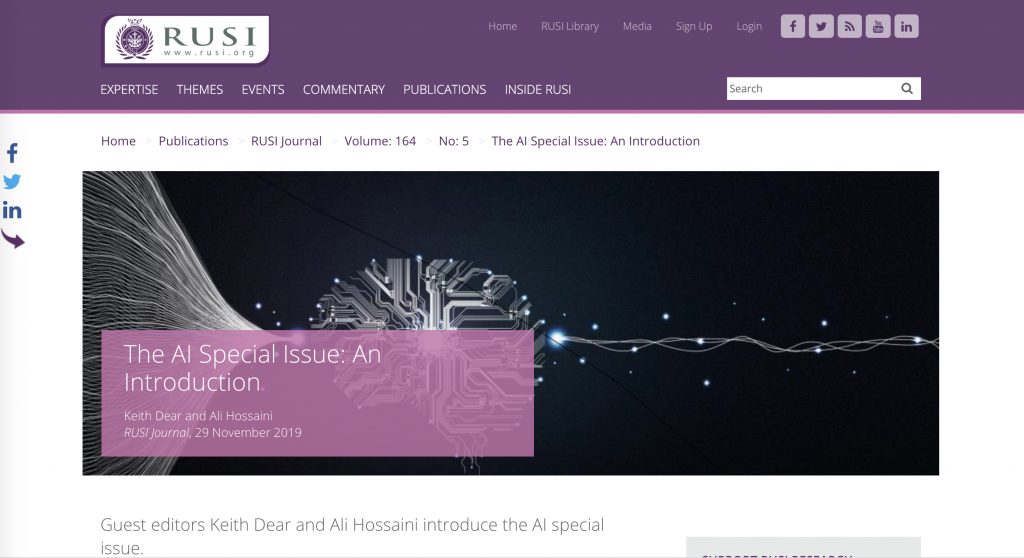Ying Tan interviews Ali Hossaini, Co-director of the new National Gallery X
Our new ten-part series, Digital Dialogues, Futurecity interviews cultural and property innovators that reveal the diversity of perspectives of collaborators and client teams involved in the complex, digital place-shaping process. For first conversation, Futurecity Head of Public Art, Ying Tan, is in dialogue with Ali Hossaini, Co-director of National Gallery X, who have just announced their first virtual artist residency and digital events programme.
Ying Tan: Tell us more about the origins and formation of National Gallery X? How has this partnership approach evolved and what type of ‘virtual residency’ do you pursue?
Ali Hossaini: National Gallery X is a creative R&D partnership between the National Gallery and King’s College London. It’s no surprise that our mission is to benefit the public through art. Our origin lies in the misfortune of a curry house. Located behind the Sainsbury Wing, when the space emptied, Chris Michaels, Director of Digital at the National Gallery, asked me to help reimagine it. (We’ve collaborated since his days at the British Museum, starting with a book on digital museums planning). I’d been running Connected Culture at King’s College London, and National Gallery X was a natural progression. King’s is keen to partner with other institutions, and, with the National Gallery on the west, King’s perfectly frames the North Bank cultural district with its Strand campus.
NGX
Ying Tan: Why a residency programme at NGX?
Ali Hossaini: When we launched NGX in September 2019, it was exciting to contemplate the potential of a space off Trafalgar Square. Since then we’ve pivoted rapidly from the physical to the virtual, but we’re agile by design. Our programme is resolutely project-based, and it advances through residencies that are complex, collaborative and self-contained. Residents address the National Gallery’s mission with 21st century worldviews but without pre-conceived outcomes. We’re looking for problems as well as solutions. Residents tap the entire range of resources at King’s College London, and we’re thankful for support from Google. I’m based in the Department of Informatics, but faculty and students from classics, philosophy, engineering, business, digital humanities and the medical school have jumped on board.
I harp on the need for cross-trained ‘Renaissance graduates’, and NGX is a place where academics can tackle the real world problems of a major museum. London’s North Bank offers extraordinary opportunities for multidisciplinary work. King’s and the National Gallery straddle Whitehall, and for years I’ve worked with RUSI, a security think tank next to Trafalgar Square. Not many places offer such a potent concentration of culture, science and politics.

NGX residents are required to engage in action research or, in plain English, to produce an event, installation or programme that tests a research proposition. Techno-art collective Analema Group are our first residents, and we’d scheduled their immersive audiovisual installation KIMA: Colour for the first week of Covid-19 lockdown. Through extraordinary effort, Analema created KIMA: Colour in 360, and online version that puts the experience in people’s hands. It’s available on mobile on the National Gallery website.
Ying Tan: How will art and culture engagement change post Covid-19?
Ali Hossaini: Covid-19 slammed the accelerator on long-term trends. Since the 90s I’ve staked my career on convergence: the idea that the Internet will absorb every other medium. It started with mail then print. I remember when people said no one will watch TV on their computer let alone their phone. I prefer making the future to predicting it, but I think the next wave of convergence is architecture. I call KIMA: Colour in 360 a ‘boundless meditation on the essence of art’, but it is also a meditation on walls and the intersection of physical and virtual space. During the Covid-19 lockdown, artist’s tools have evolved at warp speed, and more importantly, so have people’s habits. As the National Gallery and other cultural places re-open, they’ll have access to vigorous new tech that make buildings more like websites while distributing key features of architecture over media channels. Interactivity, personalization and other features we take for granted online will become part of places, and distinctions between physical and virtual will fade as architecture comes online.
Ali Hossaini, is a Futurecity associate, focusing on Digital Planning and Curation.

Cover image: ‘KIMA: Colour Van Gogh’ © Analema Group. 2020
